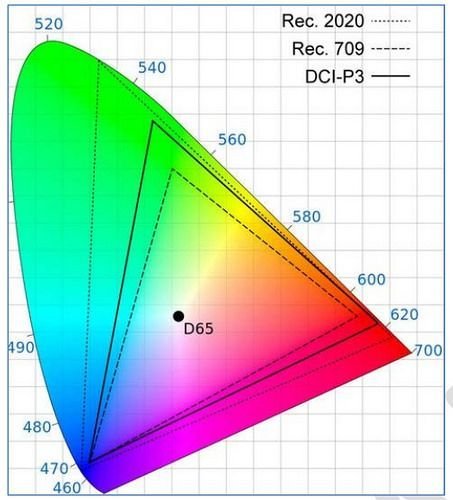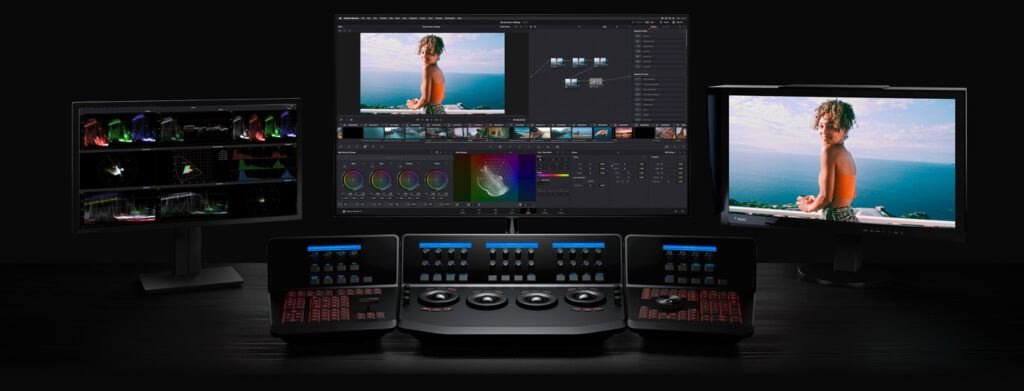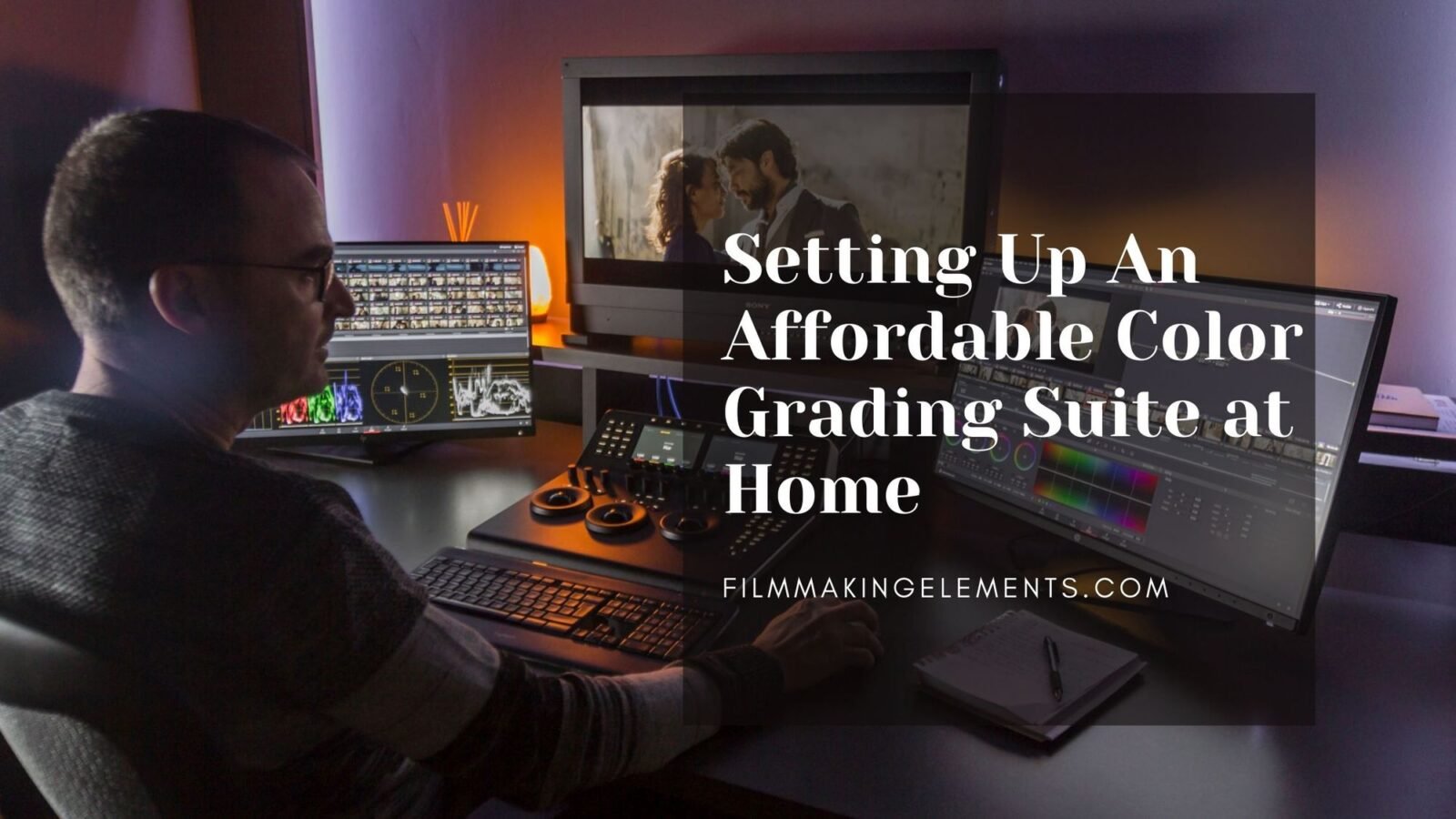We fully explained every bit of information required to Setting Up An Affordable Color Grading Suite at Home in this article. A good and professional color grading suite with fantastic performance and real-time playback were exceedingly expensive in the early days. It’s now easier than ever to put together a color grading suite for a decent price and have all the performance you require.
In a full-service post facility, you may need massive displays, server systems, excellent lighting, and limitless performance, but here are the main requirements for building an economical color grading suite in your home office that allows you to work quickly and precisely.
Things required for Setting Up An Affordable Color Grading Suite at Home.
Mac M1/M2

DaVinci Resolve users can now playback, edit, and grade 4K projects quickly and cheaply than ever before so to the huge speed improvement on new Apple Mac M1/M2 models.
With its embedded RAM, the new system is incredibly efficient, and 16GB to 64GB is sufficient even for the most large projects and intensive activities.
The speed of your storage will be critical to performance.

A Mac Mini features all of the connectors needed to connect screens, monitors, capture, and playback solutions like as the BlackMagic Ultrastudio 4K Mini, streaming solutions, and even a control surface at least with a USB Hub.
Monitor

One of my least preferred questions to answer is which display to use because there is no greatest single answer. For color-critical surveillance and monitoring, a variety of display technologies are used, each with its own set of advantages and disadvantages. Because the broadcast display is your main tool for analyzing the visuals in your program, it is most likely the most significant piece of equipment you will own, as well as the most expensive.
Display selection will demand some study and trials in order for you to make an informed decision. Depending on the scale of your organization, your budget will determine, in large part, what type of display you can put together. However, the type of work you do is a far more essential consideration when deciding which type of monitor to utilize.
Defining Your Needs
Before you get lost in the sea of specs and features, let’s focus on what you actually need the monitor for. This could be categorized into:
- Multi-Purpose: A one-size-fits-all monitor for web browsing, watching videos, and light gaming. If this is you, you don’t need to break the bank for features you won’t use.
- Content Creation: You’re a content creator who needs a monitor for SDR or HDR content. This could mean you’re working with videos or photos and need color accuracy, among other features.
- Color-Grading Professional: You’re a professional dealing with lots of color work. You need top-of-the-line specs for an accurate and smooth workflow without maxing out your credit card.
What’s Essential in a Display?
Display technology is rapidly advancing, and, like computers, the display models available from each manufacturer vary year after year, making it difficult to advise specific models that will still be relevant six months later. Nevertheless, regardless of the technology you’re interested in, when comparing different monitoring systems, keep the following factors in mind.
Compatibility with Broadcast and Delivery Standards

Whatever monitor you choose should be able to support the exact gamut (color spectrum) and gamma i.e. luma reproduction necessary for the video standard you’ll be working on. Currently, three standards control the color and lightness-reproducing features of electronic display devices for the broadcast and cinema industries: Rec. 709, DCI P3, and Rec. 2020.
Display Technology’s Bit Depth

Video signals, in practice, use 8, 10, or 12 bits per channel. Higher bit depths than this are not used to interface video displays. Consumer displays typically have 8 bits per channel, although professional digital displays with 10 bits per channel are becoming more readily accessible. Depending on the nature of your work, it’s critical to determine whether the display you’re contemplating offers 10 bits per channel. Never presume that a display can support 10-bit color. Support for 10 bits per channel isn’t strictly necessary for a display to be helpful for color-critical evaluation, but it doesn’t harm. Colors should look the same on 8-bit and 10-bit displays.
A 10-bit per channel display, on the other hand, allows you to precisely monitor and analyze the uniformity of variations in color within a 10-bit signal. One issue is that 8-bit-per-channel displays may present banding in short ramps such as light blue skies or black shadows which aren’t actually in the signal you’re correcting, prompting you to apply corrections that aren’t truly necessary.
On a related point, some manufacturers refer to monitors as having “32-bit processing.” This is not a representation of the abilities of the physical display panel, but rather a metric of the precision of the internal image processing for images that are color-calibrated via LUT support or otherwise handled through scaling or de-interlacing.

We recommend the Flanders Scientific DM240 for economical professional monitoring since it gives highly exact color accuracy and has all the capabilities you need at a reasonable price.
The Flanders Scientific DM240 has complete 12-bit video processing and a 24″ Wide-Gamut 10-bit LCD panel that can display over 1.073 billion colors. Its specific toolset is ideal for both active on-set color management uses for dailies and the most demanding post-production scenarios. This machine has 3G/Dual-Link/HD/SD-SDI, DVI-D, and Display Port connections. The DM240 can handle almost every signal format, including sophisticated 12-bit, 4:4:4, and XYZ signal codecs. The DM240’s 3rd generation Color Fidelity Engine (CFE3), specialized 2nd screen outputs, Image Flipping, Display Port to SDI cross conversion, and zero-delay operation mode set it apart from other monitors.
Also, it comes pre-calibrated from the manufacturers and has an integrated auto-calibration solution that allows you to perform a quick and accurate calibration yourself using the inexpensive 1D3 OEM probe.
The DM241 is a less expensive variant and alternative of the DM240 that shares all of the DM240’s advanced capabilities but uses a 1100:1 contrast ratio panel rather than a 1500:1 contrast panel. The LG CX 55″ is a popular option if you bring directors or clients into the session and need a screen on the wall.
Capture and Playback Solution

The UltraStudio Monitor 3G module is all that is required to link the monitor and playback video from DaVinci Resolve. The Blackmagic Design UltraStudio Monitor 3G Playback Device helps in monitoring your HDMI or 3G-SDI footage straight through your computer’s Thunderbolt 3 output connector. This tiny gadget, which supports resolutions up to 1080p60, allows you to edit without lag utilizing a large-screen TV, projector, or monitor with an SDI or HDMI input.
The UltraStudio HD Mini is required for HD playback, while the UltraStudio 4K Mini is required for 4K and capture options.

The Blackmagic Design UltraStudio HD Mini captures footage from digital or analog sources and feeds it directly into your preferred NLE. SDI and analog video inputs allow video from modern or older professional video equipment to be imported. The UltraStudio HD Mini can send or receive SD and HD video up to 1080p at 60 fps with up to 16 channels of integrated audio over the versatile Thunderbolt 3 interface. There are two SDI outputs for filling and keys, as well as an HDMI output for driving consumer monitors.
The UltraStudio HD Mini can also interact with professional broadcast decks via the built-in RS-422 connection. To stream video, connects through Thunderbolt 3. The UltraStudio Mini is powered by Thunderbolt 3 bus power, so no external power supply is necessary.

Blackmagic Design’s UltraStudio 4K Mini Thunderbolt 3 connects your Thunderbolt 3 computer to a range of video devices for capture, playback, or streaming. This portable equipment can collect DCI 4K60 4:2:2 video through single-link 12G-SDI or DCI 4K30 4:2:2 video over HDMI. Capture 12-bit High Dynamic Range (HDR) footage at up to DCI 4K30 resolution and 8-/10-bit video at up to DCI 4K60 resolution.
A built-in LCD screen allows you to check your signal, and an SD card adapter allows you to quickly access your SD media. The Thunderbolt 3 port on the UltraStudio 4K Mini provides lightning-fast connectivity.
The UltraStudio Mini 4K Thunderbolt 3 offers both compressed or uncompressed video, and is compatible with Windows, Mac, and Linux, and includes the most popular codecs. The UltraStudio 4K Mini also offers 3D capture and playback through HDMI, as well as 3D SDI playback at DCI 4K30 speeds. An SD card contains DaVinci Resolve and related software. The UltraStudio Mini 4K Thunderbolt 3 is powered by an inbuilt 100-240 VAC adaptor.
- Also Read- How to Reverse a Clip in DaVinci Resolve ( Plus A Smooth Reverse Effect)
- Also Read- Using Magic Mask To Remove Background In Davinci Resolve
- Also Read- How To Render 60fps In Davinci Resolve (4 Simple Steps)
Monitor for GUI

For the GUI monitors, the Dell UltraSharps are a very good option.
Dell UltraSharp PremierColor monitors extend the frontiers of monitor technology to produce an extraordinary color performance that matches the expectations of colorists, whereas UltraSharp monitors provide brilliant color for professionals who prioritize color accuracy in their work.
They provide broad color coverage across industrial color space standards such as AdobeRGB, sRGB, Rec. 709, and the widest DCI-P3 color coverage. DCI-P3 (which provides roughly 25% more coverage than sRGB) allows for a broader variety of colors and is gradually becoming the color standard for creating and watching content.
With a color depth of up to 1.07 billion colors and 10-bit color, they have clean color transitions and precision across more shades. Furthermore, UltraSharp displays are factory color calibrated and include a full factory calibration report, providing good experience and confidence that colors will be precise right from the start.
The HP Dreamcolor series is another popular low-cost option worth investigating. WIDE COLOR GAMUTS, such as 100 percent sRGB and Adobe RGB coverage and 99 percent DCI-P3 coverage, ensure that your color is always correct, irrespective of output.
Its TRUE 10-BIT capability enables better shading and more stable gradients. DreamColor Studio displays have a REAL IPS PANEL that improves on the industry’s best IPS technology, resulting in deeper blacks and less black lift.
The Importance of Size and Distance
The last but far from least important aspect to consider is the monitor’s size. The ideal size isn’t just about how big the screen is but also about how far you’ll be sitting from it.
For a monitor to fit into your workspace ergonomically, consider a size that doesn’t cause you to squint or strain your neck. The general recommendation is 31 to 32 inches for professional use, though this can vary based on individual preferences and needs.
Monitoring of Audio
Many facilities employ JBL and Yamaha audio monitors for clean, precise sound, but there are several options from companies such as Adam, Mackie, M-Audio, Genelec, Rokit, and others.
Control Surface

Your color grading suite will be lacking if you don’t have a color control surface, as this is the best and most efficient way to color grade. While Blackmagic Design’s Mini and Micro panels are reasonably priced, we recommend Elements from Tangent Elements. It is a low-cost modular architecture that allows you to select only the parts you require, and it is compatible with a wide range of applications not just Davinci Resolve.

Aside from the size of Tangent Elements, the first thing you’ll notice about Element is its sleek, ultra-slim appearance. Quality comes in the shape of a precision laser cut case made of pure aluminum. But it doesn’t stop there; all of the internal parts have been meticulously selected for dependability. Because all rotational controls and tracker balls include optical pickups, they are long-lasting and precise.

The buttons are really dependable and have a pleasant clickity-clack feel. The displays are white OLEDs that are clear, high-contrast, high-resolution, and easy to read. When the panels are placed side by side, they magnetically snap together, keeping the arrangement properly aligned.

Each Element is reasonably priced, and because it is modular in design, you can pick and choose whatever elements you require, directing your resources where they are most needed. If your money permits, you can even add additional of the same style of the panel to create your ultimate control surface.
Remote solution

Setting Up An Affordable Color Grading Suite at Home requires cloud solutions for better and secure data transfer. Working from home necessitates the use of a remote solution. Pixelview is a popular all-in-one colorist solution that allows for seamless collaboration with remote clients. It has a video chat feature, and you can make adjustments in real-time while everyone is viewing the same high-quality project.

You may also use Frame.io to upload, evaluate, and share media with your entire team from anywhere in the world. Video producers and colorists may share files, make real-time comments on clips, and evaluate multiple variations or edits of the same clip. Frame.io combines all of these features into a simple and powerful web-based solution.
They offer a long variety of integrations, including an iOS app for on-the-go accessibility and the Frame.io Transfer tool for rapid bulk file transfer. Their Adobe Premiere and FCPX connectors bring the Frame.io experience straight into our editors’ NLEs.
Bias light
A bias light or backlight is a light placement that many colorists recommend. This is a light that sits just behind your display and lights the space in your field of vision around your image. This may appear strange, yet there is substantial evidence that such light gives practical benefits to the user, such as decreased eye strain and enhanced noticeable image contrast. It also has the added advantage of appearing incredibly nice.
Walls of the studio
Setting Up An Affordable Color Grading Suite at Home is not as easy as you think. If you’re putting together a display, the style of the room in which you’re working should be muted and desaturated. The viewable space behind the display, known as the surrounding wall, has to be a neutral grey. Neutral grey can be achieved by painting the wall or covering it with curtains or cloth. Regardless of the method, you select, the optimal wall covering hue is somewhere about 18% gray and uses paint or material that stays neutral when illuminated by proper surround lighting.
The color grey is ideal because it maintains your perception of color. Your eyes will adjust somewhat if your walls are bright yellow. This has an effect on your visual perception, and you will notice less yellow in your footage. That may result in your characters looking like avocados, which your client may not like. As a result, grey walls act as a neutral point for your eyes to build a foundation of color and brightness.
In some situations, this paint can be blended at a nearby shop, although the results are rarely consistent or exact. Ordering the paint from a professional manufacturer is the best option.










Got a Question?
Find us on Socials or Contact us and we’ll get back to you as soon as possible.